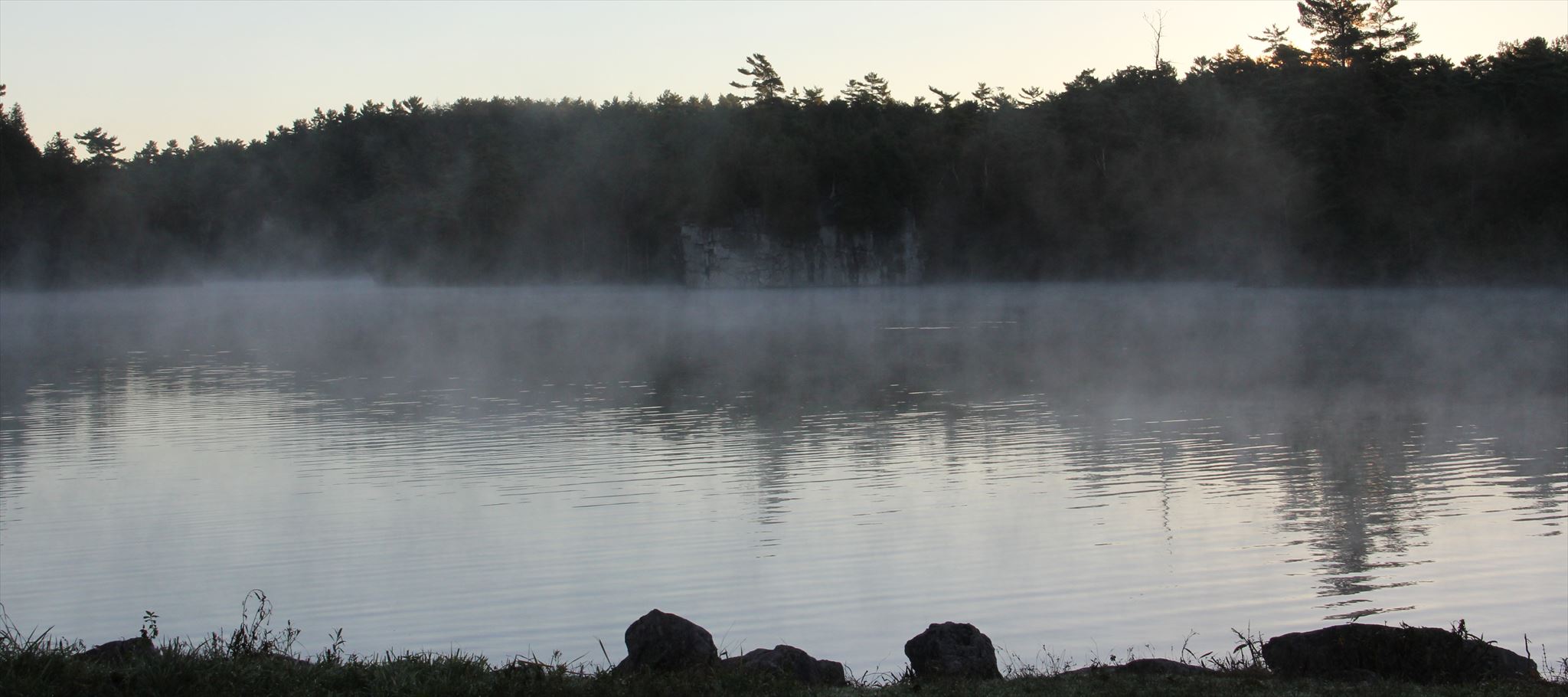
Zebra Rock
The Zebra Rock formation that can be found here in Rockwood Conservation area is the equivalent of two million years of aquatic life build up. The black streaks in the rock are due to chemical weathering—carbon attaching to the limestone formation. Zebra Rock is a siltstone and is porous to water. Being a siltstone, zebra rock is finer texture than sand but not as fine as clay. Zebra Rock consists of a fine grained siliceous argillite (siltstone and/or claystone) with rhythmic patterns of coloured bands or spots contrasting sharply with a lighter background. It is not known how the regular patterns were formed. The red stripes are coloured ferric (iron) oxide.
Siltstone is a clastic sedimentary rock. As its name implies, it is primarily composed of silt sized particles. Siltstones differ significantly from sandstones due to their smaller pores and higher propensity for containing a significant clay fraction. Although often mistaken as a shale, siltstone lacks the fissility and laminations which are typical of shale. Siltstones may contain concretions. Unless the siltstone is fairly shaly, stratification is likely to be obscure and it tends to weather at oblique angles unrelated to bedding. Mudstone or shale are rocks that contain mud, which is material that has a range of silt and clay. Siltstone is differentiated by having a majority silt, not clay.
Although the Zebra Rock that you see here today only dates back 2 million years, Rockwood's geological evolution dates back to as far as 410 million years ago to the Eramosa formation or rock.
Logging Tasks
You are to approach the zebra rock formation by canoe or kayak and are to remain in your boat while performing the necessary tasks below. Do not leave your boat.
1) Pet the Zebra. Don't worry, he won't bite. Rub you hands or fingers against both the darker and lighter bands of the zebra rock. What is the difference in texture between the black and white? Does any of the rock rub off on your hands? Describe.
2) A leopard cannot change it's spots, nor a zebra it's stripes. Describe the layout of the stripes that you observe. Is there more black or white?
3) Did your Zebra friend forget to cover up with sun screen? Are there any other coloured stripes such as red on the rock face and if so, measure or estimate how far up from the waterline these stripes are found (lowest point). What causes the red stripes and why do you think they are at a certain point in the rock?
4) Does the Zebra have acne? Examine closely the characteristics of the porous rock. How deep is the deepest pore that you find. Are any pores filled with dirt?
As you continue your journey throughout Rockwood Conservation Area and moving forward explore the world around you, keep an eye out for other Zebra Rock formations and see how they differ from what you have observed here. And if you journeys ever take you to Australia, be sure to visit the best examples of Zebra Rock in Kununurra in the East Kimberley region.